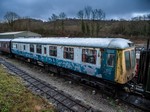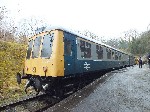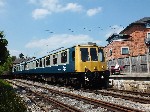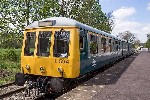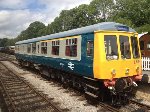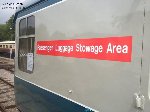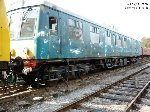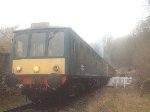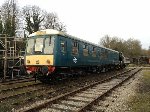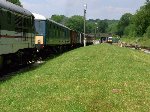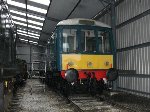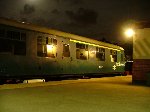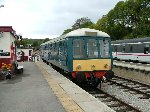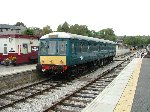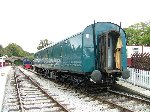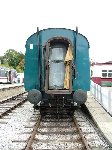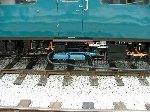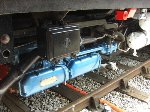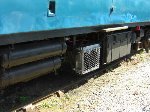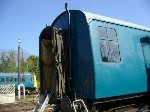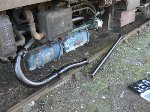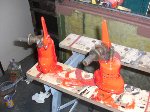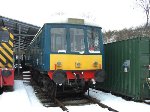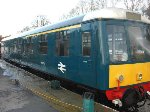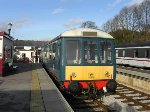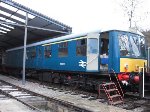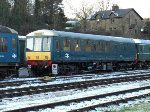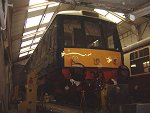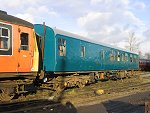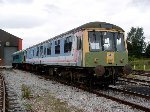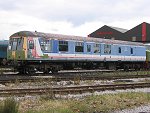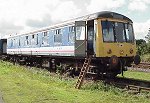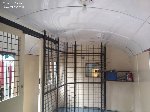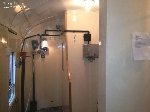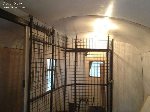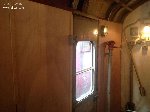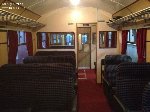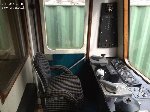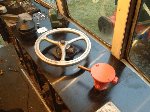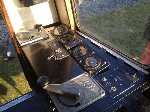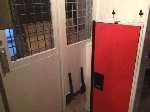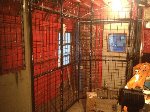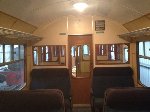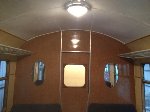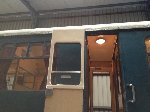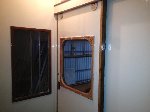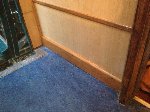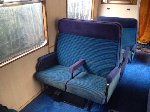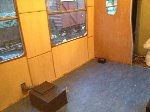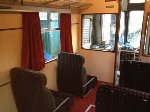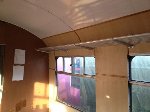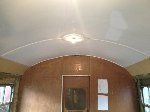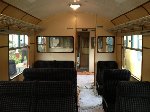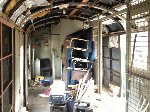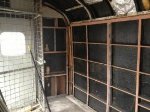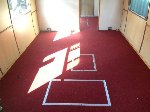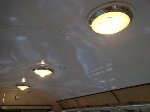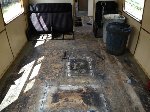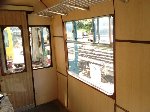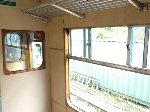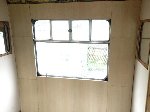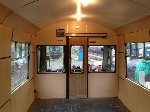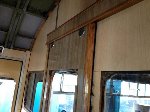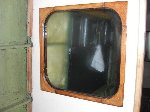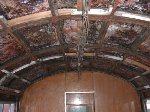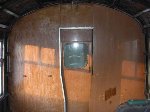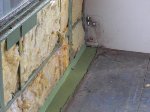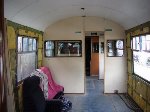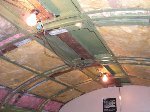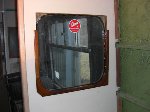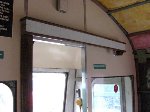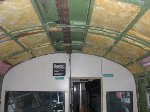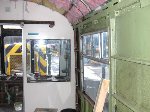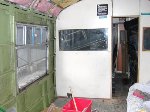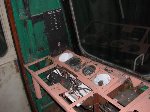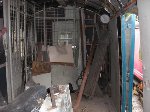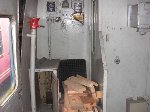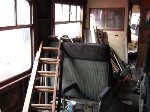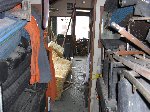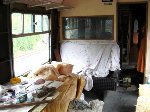51073 Class 119 Driving Motor Brake Composite
Home Railway |
Location History |
Mid Norfolk Railway Dec 96-Jul 04 |
|
Current Location |
|
Ecclesbourne Valley Railway May 06-Nov 24 |
|
Current Status |
Operational |
|
Swindon & Cricklade RailwayNov 24-Present |
Current Livery |
BR Blue (Full Yellow End) |
||
TRA Designation |
Visited Railways |
Midland Railway Butterley (Contract Restoration) Jul 04-May 06 |
|
Partner Vehicle(s) |
|
|
|
Owner |
Gloucester Railcar Trust |
|
|
Website |
|||
Record Last Updated |
22 March 2025 |
||
Preservation Modifications |
|||
Preservation Information In 1996, 51073 was thoroughly cleaned ready for proposed use by the National Diesel Railcar Museum project, which later collapsed, the vehicle remaining in store. Due to commitments with other vehicles, little restoration work was done on the vehicle. It was in a poor and incomplete state and was later put up for sale. After failing to find a new owner, 51073 was retained and the descision made to restore it to operating condition as it was one of only three surviving Class 119 vehicles. The vehicle was sent to the Midland Railway Butterley in 2004 where contract bodywork restoration was undertaken, rapidly emerging in BR Blue livery during 2005. Some work underneath was also done, returning many of the larger missing components including both engines and final drives. Whilst 51073 had been receiving contract repairs, its owning group had relocated their vehicles to the Ecclesbourne Valley Railway, so 51073 joined the fleet there in 2006, where the vehicle was stored again due to lack of volunteer resources. In November 2008 the restoration recommenced with the new and growing team based on the EVR. Apart from a thorough exterior clean, work focused on the interior with the steelwork rust treated from the inside then covered with insulation. 2009 saw some woodwork restored in January and returned to the vehicle including the internal cab-to-saloon door. On the ouside, the vehicle received a new cab window. During March, the ceiling has been fitted to the first saloon. Warmer weather in April saw attetion turned to the underframe with many components such as exhausts and electrical boxes repainted and refitted. This work continued throughout the summer with the bogies and underframe progressively receiving a fresh coat of black. In November the No2 engine was sucessfully started up. Early 2010 saw the team retreat back into the interior where more woodwork was completed, before other commitments caused the restoration to be suspended in February for nearly two years. In December 2011 the restoration was restarted, with work concentrating on the interior finishings. During the winter months, some of the cab wiring/controllers were refitted. By April 2012, the only passenger vestibule has been de-refurbished with the orange Formica replaced with a wood grain alternative, the ceiling replaced and both interior sliding doors rebuilt and refitted. Between May & December, all of the passenger saloons were pannelled with new Formica, along with new wooden trim. The timber window surrounds were restored and refitted along with the luggage racks. Ceilings were replaced, repainted and fitted and the tungsten lighting returned. Carpet was fitted to the first class saloons and replacement lino in second class. The first class seating was then cleaned and installed. Some mechanical work was also done, with the No1 engine being started for the first time since restoration. A start was made on refitting and testing the various replacement mechanical components which had been stripped from the vehicle twenty years previously. Inspired with the now quite dramatic visual results, the restoration of 51073 continued to progress in 2013. During January, mechanical restoration of vacuum and air components had been completed to the stage where the vehicle was able to move under its own power for the first time since 1993 (20 years). Inside the vehicle, the second class seats were fitted (completing that saloon) and restoration of the guards van and cab was started in February. In March a new cab desk and restored Formica panels were installed vastly improving this area, and the vehicle made its first full (9 mile) line test run sucessfully. April saw replacement lino and a refurbished driver's seat fitted to the cab, as well as the fitting of the first class seating. Exterior metal repairs to rotten cant rail in the guards van area were also completed. In May, work to repaint the vehicle was started and the guards van interior received new panelling. By June the vehicle had emerged, very smart, in BR Blue & Grey livery concluding the exterior work. Inside, the guards van area was completed with the cage repinted, varnished parcel shelves restored/fitted and also a new ceiling. Final mechanical improvements were made before the restoration was finally completed. In August 2013, 51073 became the first Class 119 to carry passengers for approximately 20 years when it was launched at the railway's Multiple Memories gala. It was the first vehicle to be fully overhauled in house at the EVR, so held a special place in the fleet. It entered regular service most commonly paired with Class 101 E51505, although sets were often reformed using other vehicles if required. 51073 won The Railcar Association's Railcar of the Year 2013 award. In April 2014, as part of an A exam, the injectors on No1 engine were changed for some overhauled ones. During July, an injector pipe on No2 engine had to be replaced after it cracked in service. In August, 51073 featured in local news when it opened the rebuilt Shottle station, a ribbon next to the cab being ceremoniously cut. The completion of Class 101 50253's restoration in September 2015 allowed the EVR to form fixed operating sets, with 51073 being paired with Class 108 50599. The late 2010's saw DMU running reduced at the Ecclesbourne Valley Railway, which meant 51073/50599 started to be used less frequently due to the set's unusual layout and low capacity. In 2019 the withdrawal of 50599 from service, plus the departure of another vehicle from the railway, led to 51073 being paired once again with Class 101 51505 for a time. This created a set with slightly better seating capacity, but 51073's external appearance was letting it down, so use continued to be limited. In March 2020 at the annual railcar gala 51073 was used at the EVR for the final time, being taken out of service after the event for bodywork repairs and a repaint. Unfortunately the Covid pandemic severely affected the railway and the ability to undertake the overhauls programme and 51073 was one of the victims. Although mechanically fully servicable, the bodywork degredation prevented the vehicle from any further use and there was no resource available for rectification. Some three and a half years of storage followed, during which time the railway continued to review the need for such a large resident DMU fleet. 51073's low seating capacity potentially made it a less desirable vehicle. A start on repairing 51073's filler-heavy main bodysides was made in the autumn of 2023, but the work was brief and the vehicle soon returned to storage. The following year, as part of the EVR's overall strategy to reduce its DMU fleet to two sets, 51073 was sold, being purchased for use at the Swindon & Cricklade Railway. The vehicle moved in the autumn joining the other two surviving Class 119 vehicles in the process. 51073 was quickly paired up with identical twin 51074 forming an interesting 2-car set that uniquely had more first class accommodation than second! Over the winter, the bodywork was smartened up quickly with a coat of BR blue and mechanical systems were checked successfully. 51073 currently forms the main DMU operating set at the Swindon & Cricklade Railway in a 2-car set with sister 51074. |
|||
Future Plans |
|||
Interior

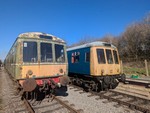

.jpg)
.jpg)

